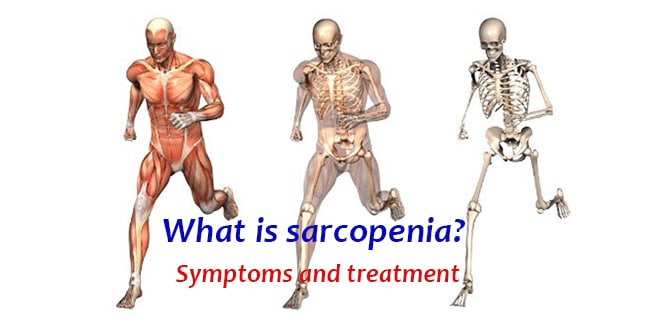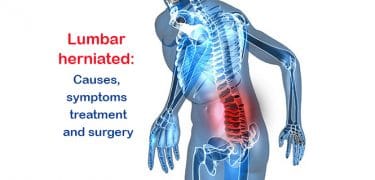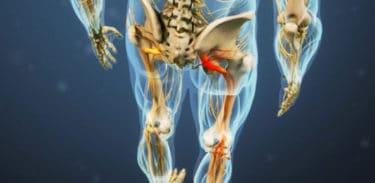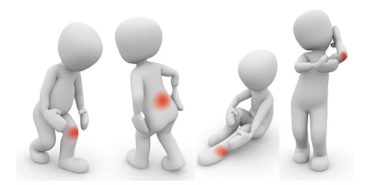Muscle loss can be defined as a decrease in muscle mass and muscle strength. Increased prevalence of sarcopenia is a problem that can be found even in young people and children, although it is mostly seen in the elderly. Although the main reason is old age, factors such as poor nutrition and stress may cause this problem to develop. Even though there is no definite treatment, exercise, healthy and adequate nutrition can prevent muscle mass and muscle strength loss. Early diagnosis is very important to get the best out of the treatment. Late diagnosis may cause serious health problems and even death.
Table of Contents
What is muscle loss (sarcopenia)?
Muscle loss is the loss of muscle mass, usually caused by aging. Under normal circumstances, a fair amount loss of muscle mass with old age is considered normal. However, sarcopenia is a medical term used to describe severe muscle loss. Until the age of 30, our muscles continue to develop. However, after thirty, muscle mass begins to disappear and lose its function.
Particularly, those who live a sedentary life lose a significant part of their 3-5% of muscle mass in every 10 years after the age of 30. The most important cause of muscle loss, which seriously affects quality of life, is aging, but other factors may accelerate this process. When these factors are eliminated, sarcopenia can be significantly prevented.
What causes muscle loss?
- Aging
- Having a sedentary life
- Poor and malnutrition: consuming a small amount of nutrients, especially those containing protein and vitamin D, decreased appetite due to aging, unbalanced nutrition, and not consuming enough vegetables and fruits triggers bone resorption.
- Disorders such as mood disorders, heart, liver, kidney and respiratory failure,
- Diabetes, obesity
- Stress
- Smoking and drinking alcohol.
- Being born with a low weight
- Chronic health problems with aging
- Genetic factors
- Decreasing hormone levels with aging such as growth hormone, testosterone and estrogen, increased insulin resistance and decreasing thyroid functions
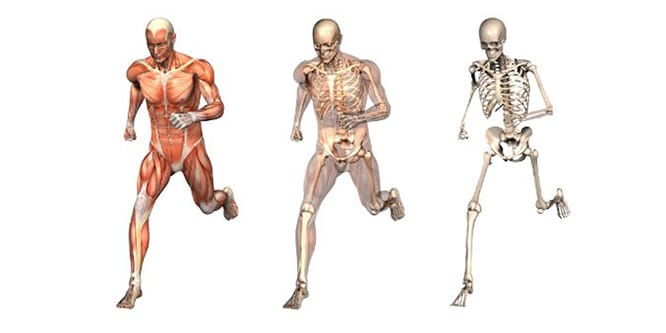
Symptoms of muscle loss
- Weakness
- Powerlessness
- Poor balance
- Difficulty in climbing stairs
- Loss of endurance
- Reduction in muscle size
- Reduction in physical activity and strain
Symptoms may vary depending on how much muscle mass is lost. Although the loss in muscle mass is not taken seriously by most people, this may lead to the person losing his balance in progression of disease, in other words, his fall.
Individuals may even have difficulty performing a physical activity, such as walking. Therefore, when you encounter one or more of the above symptoms, you should immediately see a specialist.
Diagnosis of sarcopenia
First of all, your doctor will hear your complaints for diagnosis. The walking speed test and the DXA used for measuring the skeletal mass are among the tests used for diagnostic purposes. In the DXA test, low-energy X-rays are sent to your muscles to test your bone density and osteoporosis. When evaluated with the walking speed test, DXA may facilitate the diagnosis of muscle loss.
In sarcopenia screening, a number of imaging techniques such as CT, MR can be used to evaluate the performance of muscle mass, muscle strength and physical performance. Techniques for the diagnosis of sarcopenia:
- Evaluation of muscle strength: mostly the use of hand-held force tests and peak expiratory flow measures are mostly used.
- Physical performance: Your physical performance can be assessed by using the stair climbing strength test, the six-minute walking test, the chair sit up test.
Treatment of muscle loss
There is no definitive treatment of sarcopenia. However, it may be possible to stop muscle loss with a number of methods. It is aimed to increase your physical resistance and strength in the treatment of sarcopenia. However, there is no drug approved to prevent muscle loss. Still, there is no drug approved to prevent muscle loss.
On the other hand, researches on hormone therapy aiming to increase lean muscle mass in modern medicine are continuing. It is not yet known when this hormone therapy including testosterone and growth hormones will be used in the treatment of muscle loss.
Another treatment that is still being discussed is urocortin. It is thought that muscle loss can be prevented with urocortin, which increases the secretion of ACTH hormone in the pituitary gland. However, this method is not yet recommended by doctors and researchers. We can list the current methods used in the treatment of muscle loss as follows:
Prevention of muscle loss with exercise
The most effective method in the treatment of sarcopenia is exercise which means physical activity. Resistance training to improve muscle strength and endurance can help prevent muscle loss. Hormone levels can also be balanced with resistance bands and weights. In the same way, resistance training, defined as a “specific exercise form,” may allow the protein to be converted into energy more easily in humans.

In a short period like two weeks, you can treat your muscle loss with a specific exercise form that you can learn from your physiotherapist. However, physical exercise such as fitness, aerobics and walking can also be used to treat muscle loss.
Exercises preventing muscle loss: It is especially important that the elderly patients participate in muscle strengthening activities at least 2 times a week. The use of all muscle groups, including the legs, arms, chest, shoulders, abdomen and back during these activities, significantly prevents the development of muscle loss.
For the strength training, the elders must work with an exercise coach. However, all elderly people who want to receive resistance training should first see their physicians and get approval from their doctors that they have no health problems.
Resistance training
Resistance can be achieved in muscle fibers with barbell and resistance bands. New proteins can be created or existing muscles can be strengthened. With a 12-week resistance training, the strength of the muscles can be increased.
Fitness training
The sarcopenia can be kept under control with Aerobic and endurance training. With aerobics accompanying resistance training, sarcopenia can be prevented and reversed especially in women.
Walking to prevent muscle loss
Walking activity, which prevents muscle loss in patients over 60 years old patients, is another method used in the treatment of sarcopenia. With a 30-minute walk a day for six months, the low muscle mass can be increased and existing muscles can be strengthened.
Effect of nutrition on muscle loss
Muscle loss can be stopped with a proper nutrition and diet. At this point, the patient must consume foods rich in protein, such as fish, lentils, hazelnuts, and quinoa. However, the patient should avoid excessive fat, cholesterol, sodium-containing food consumption. The consumption of healthy protein sources is important at this point.
The Sarcopenia in Elderly: Patients and Treatment
The most important cause of muscle loss in the elderly is that the protein production required for the growth of the muscles stops and as a result, the muscle cells shrink. In elderly people with sarcopenia, falls, fragility and loss of balance are frequently encountered when walking. In elderly patients diagnosed with muscle loss, vitamin D and protein supplements are usually used for treatment. However, in order to strengthen the skeletal muscle, your physician may see the ACE inhibitors as appropriate.
Sarcopenia in Children
Although muscle loss occurs mostly in the elderly and adult individuals, this disorder may also be affect children. Duchenne Muscular Dystrophy, one of the common types of muscle loss, is a genetic disorder seen in boys. This disorder observed in boys between the ages of 3-6 years, first in the pelvis and lower limbs start to spread to the shoulders over time. Children may lose their physical performance so that they will have to use a wheelchair at the age of 10 years.
Children may lose their physical performance so that they will have to use a wheelchair at the age of 10 years. Humeral dystrophy, which can be seen in both males and females, starts in the facial muscles and is also seen in the shoulders and pelvis.
Early diagnosis is extremely important in the treatment of sarcopenia, which can cause disability in children and even death. Although there is no definitive method in the treatment, alternative treatment methods such as orthopedic treatment, water treatment and physical therapy are mostly used. With this treatment method, it is aimed to increase children’s mobility and strengthening their muscles.
What is good for Sarcopenia?
By trying the following methods, you can fight sarcopenia, as well as strengthening your muscles, you can be protected from muscle loss.
Epsom Salt Bath
The Epsom salt, also known as magnesium sulfate, is a compound made of magnesium sulfur and oxygen that is completely different from the table salt. Used as bath salt. Epsom salt bath strengthens and relaxes your muscles and provides a general relief. To prepare the bath, fill a standard bath tube with warm water, add about 2 cups of Epsom salt and let it melt. Then, lie in that water for 15 minutes.
Massage
Massage on the body with coconut oil, olive oil and mustard oil eases the blood flow by relaxing the muscles. With the acceleration of bloodstream, vitamins and minerals that feed muscles like protein, iron and magnesium, reach the muscles more easily and strengthen the muscles.
Water
Dehydration is a factor that weakens the muscles in the person. At least 2 liters of water consumption during the day muscle tension can be prevented as well as muscles can be strengthened.
Acupressure
Acupressure is a method similar to acupuncture. Pressure is applied to the acupuncture areas and it is aimed to reduce the pain in that area. Although acupressure is mainly used to relieve pain, it also accelerates bloodstream and helps to strengthen muscles.
Foods with Vitamin D
Vitamin D supplements can be used to prevent muscle weakness and loss. Muscles can also be strengthened by sunbathing for 10 minutes in the morning. Salmon, fish, milk, orange juice and spinach are rich in vitamin D also very beneficial.
Does Sarcopenia kill? How long patients do live?
In cases where sarcopenia progresses, is not diagnosed and treated early, the disease can have fatal consequences. When the diagnosis and treatment of the disease is delayed, it is only possible to extend the life span of the patients at least a few years by treatment methods such as physical therapy, exercise and proper nutrition.
What should Sarcopenia Patients eat?
A diet rich in vitamin D, magnesium and calcium can be effective in the treatment of muscle loss.
- Protein: Increases muscle growth by enhancing muscle tissue. Muscle growth can be achieved by eating lean meat, fish, eggs and soy.
- Vitamin D: Vitamin D supplements can help to stop this process because vitamin D deficiency is an important cause of muscle loss.
- Omega 3: 2 grams of fish oil supplement daily with regular resistance training is especially effective in the treatment of muscle loss in the elderly. This is thought to be due to the anti-inflammatory properties of Omega 3 fatty acids.
- Mediterranean type diet: A Mediterranean type diet including fish, olive oil and dark green leafy vegetables can provide positive results for sarcopenia treatment.
- Keratin: There are many scientific studies suggesting that keratin administration with regular exercise helps muscle growth. However, keratin intake alone is not sufficient.
Suggestions to Sarcopenia Patients
- Remember that stress accelerates the process of sarcopenia and try to keep your morale as high as possible.
- Take care to consume foods that strengthen muscles such as bananas, honey and yogurt.
- Believe in the strength of exercise and do the exercises that your physiotherapist recommends daily.
- Do not smoke or drink alcohol.
- Limit caffeine consumption as much as possible.
- Regulate your sleep.

